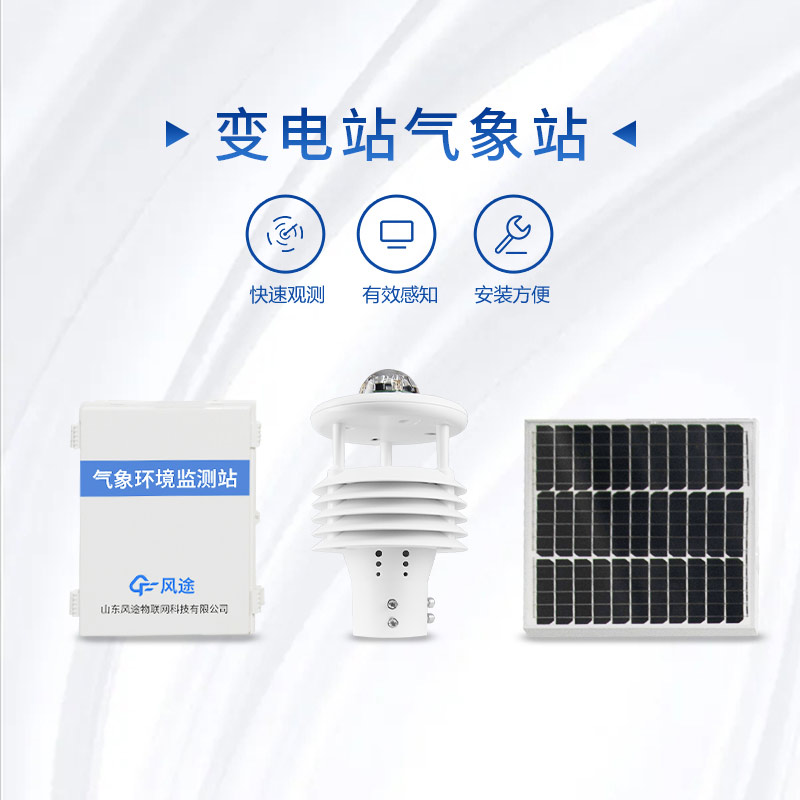Tianqiong Sensor IOT Technology Co., Ltd
Sales Manager:Ms. Emily Wang
Cel,Whatsapp,Wechat:+86 15898932201
Email:info@fengtutec.com
Add:No. 155 Optoelectronic Industry Accelerator, Gaoxin District, Weifang, Shandong, China

Sales Manager:Ms. Emily Wang
Cel,Whatsapp,Wechat:+86 15898932201
Email:info@fengtutec.com
Add:No. 155 Optoelectronic Industry Accelerator, Gaoxin District, Weifang, Shandong, China
time:2025-03-04 09:34:28 source:Weather Station viewed:5 time
China has a vast territory with complex and diverse geographical environments and significant differences in climatic conditions. As a crucial link for power transmission, transmission lines inevitably traverse special geographical areas such as valleys, high - altitude peaks, and rivers. These special areas often form unique micro - climates that are quite different from the surrounding environments. For example, due to the narrow terrain in valley areas, strong wind channels are easily formed, and the wind speed is much higher than that in plain areas. High - altitude peaks often face harsh weather conditions such as low temperatures, strong winds, and lightning strikes. The humidity over rivers is high, and phenomena such as thick fog and icing are likely to occur in specific seasons. These special climatic conditions pose a great threat to the normal operation of transmission lines, and may lead to serious faults such as line short - circuits, broken wires, and tower tilting. This will not only cause large - scale power outages but also bring huge economic losses. To effectively address this challenge and ensure the stable operation of transmission lines, the Transmission Line Weather station has been designed.
Functional Features
As a professional climate and environmental monitoring device, it can accurately monitor various meteorological parameters such as ambient temperature, humidity, wind speed, wind direction, air pressure, rainfall, and sunshine. Whether it is a high - temperature warning on a hot summer day or wind - speed monitoring before a winter snowstorm, it can comprehensively grasp the meteorological conditions around the transmission lines.
With the help of wireless communication technology, various collected meteorological parameters and their changing conditions can be transmitted to the system host in real - time and stably. Relevant personnel can obtain the latest meteorological information immediately through a remote terminal without having to be on - site, providing strong support for timely decision - making.
When the monitored meteorological data exceeds the normal range and abnormal conditions occur, the system will quickly start multiple ways to send pre - alarm information. Whether it is SMS push, system pop - up windows, or audible and visual alarms, it can ensure that relevant personnel notice in a timely manner and quickly take countermeasures.
Monitoring through this device can greatly save manpower and material resources. In the past, a large number of workers were required to regularly inspect the lines. Now, only personnel need to be reasonably arranged to handle abnormal situations according to the monitoring information. This not only improves work efficiency but also ensures that potential problems are discovered and solved in a timely manner, effectively guaranteeing the normal operation of transmission lines and strongly ensuring the stability and reliability of power supply.

The Ultrasonic Wind Speed Direction Sensor achieves measurement based on the characteristics of ultrasonic waves propagating in the air. It accurately calculates the wind speed and direction by measuring the time difference of ultrasonic waves propagating in different directions. This non-mechanical...
In the context of the increasingly accelerating urbanization process today, air quality has become one of the key elements for measuring the quality of life. However, due to the high construction and operation costs and fixed layout, traditional large-scale environmental monitoring stations find it...
Two - dimensional ultrasonic anemometers can only measure two parameters: wind speed and direction on the horizontal plane. They cannot obtain information about the wind in the vertical direction, such as vertical wind speed or the upward/downward speed of vertical airflows. Therefore, they are only...
Meteorology encompasses a wide range of elements, such as rain, ice, wind, frost, clouds, and temperature, among others. In the power system, "micro-meteorology" is different from what is described in meteorology. Power micro-meteorology refers to the meteorological conditions in a small s...